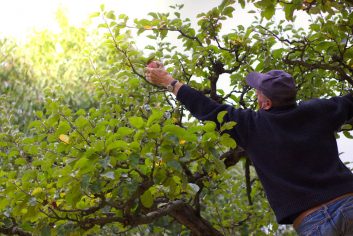Hi everyone, so today we will be covering Risk/Hazards in brief and in a later blog post, Personal Protective Equipment (PPE). Another blog will be available soon with a bit more detail and some helpful unbiased purchase suggestions.
Complacency:
We have all heard people say “I’m just going to go and…” The word “just” implies the task is simple, easy and finished quickly. This sort of phrase may sound familiar, but can we potentially ignore the hazards in a situation by assuming the task will be completed quickly and needs little forethought?
-” I am just going to pop to the shops.” This may entail driving, which could be dangerous depending on the time of day, road and weather conditions and your skill level.
– “I am just going to mow the lawn.” This may mean that you will be operating both a strimmer and a lawn mower. These machines can fling around mud, stones and any debris on the lawn, causing injury to toes, feet, legs and even eyes. Also there is a risk of secondary injury caused by glass from stones flying at and through windows. Other risks when lawn mowing include the additional dangers of machinery malfunction and the associated monetary costs of repairs.
-” I am just going to clean the upstairs windows.” If doing so while up a ladder, is the ladder in good repair, is it sited on firm ground, will someone be stood at the bottom of it, do you have a working mobile phone, is anyone going to check on you every 5 minutes?
– “I am just going to assemble a nuclear reactor.” Haha perhaps not! But hopefully by now you get my point?
If what you are going to do is use any kind of machinery then there are likely to be more dangers than you believe, due to complacency caused by nothing having happened to you before when you used that machine or carried out that activity. Therefore, if you hear yourself or someone else using “just” in this context, stop and consider the risks, as they are likely to warrant some further consideration and action.
Risk Assessment:
We have established that everyone should risk assess their site and gardening activity before they begin work. Now for householders, assessing the site should be a little easier than it is for working gardeners. They will have significantly more control over what is happening on or around the site. For a gardener, assessing the site could require a walk around and 5 minute assessment. Specific risks involved can be quickly identified and assessed. Knowing your site well is crucial to safety. Remembering that it will never be exactly as you left it is just as important. Therefore an initial assessment is important, but just as important is the ongoing dynamic risk assessment you should perform throughout the task.
Now do not panic, this does not have to be documented, as we all do this naturally as part of our human experience. It has to be pointed out that some people are better than others at risk assessment. They are more risk averse or have witnessed or been lucky with a near miss and respect risk more. Others are less aware of risk and/or are more gung-ho. This group are either very lucky throughout their lifetime, or end up maiming/killing themselves or others due to their negligent behaviour.
Sorry to be a little bit serious, but that is the sad and gruesome truth of inadequately understanding and respecting risk.
So that you can calculate risk, you will need to identify hazards. So what is a hazard?
A garden hazard can be anything that could cause you harm from more permanent physical features such as steep slopes, steps or a pond, to temporary factors such as possibly ingesting pesticides (chemical) being used, animal excrement (biological) and tripping over cables/hoses (physical).
Each hazard can be vastly affected by the users of the garden. For example, features that as adults we would not consider to be a hazard, suddenly can become medium to high risk to smaller children. For example a shallow nature pond is low risk to an adult, but a far higher risk to small children.
This does not mean that you cannot have a pond, but if children will be using the garden then a low picket fence around the pond should be considered as a pretty protective barrier to restrict access and therefore minimise the risk of harm.
So to conclude, hazard is something that has the capability to cause harm and the risk is the likelihood of an incident occurring compared with the significance of injury.
Often to remember this people use the example of a tiger in a cage. The Tiger is potentially an incredibly dangerous hazard, but when it is locked inside a steel cage the risk is incredibly low.


